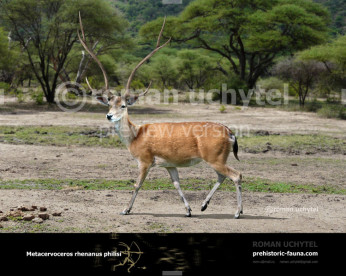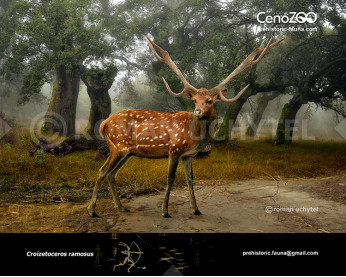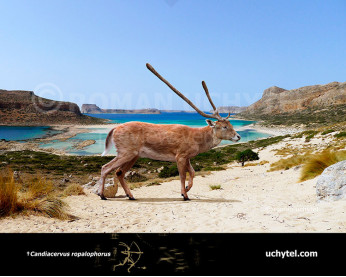Euprox
23292329
Euprox (†Euprox (Stehlin, 1928))
Order: Artiodactyla
Family: Cervidae
Temporal range: Miocene of Eurasia ( 16 - 9 Ma)
Dimensions: length - 1.4 m, height - 100 сm, weight - 20-70 kg.
A typical representative: Euprox furcatus Hensel, 1859
Euprox is an extinct genus of deer that lived in Eurasia during the Miocene. The environment that Euprox inhabited would have been warm and humid, with many tropical forests. Euprox was some of the earliest types of deer known to have true antlers. The antlers of Euprox were short, with two small prongs projecting from the main branch. Euprox is notable for being the earliest deer to possess the presence of a real burr, which are indicative of the border between permanent and deciduous segments of a deers antlers.
The type species Euprox furcatus was originally under the genus Prox, but that name was preoccupied. Depéret assigned it to the related genus Dicrocerus in 1887, before it was assigned to its current placement in 1928. Euprox dicranocerus and Euprox minimus were transferred to the genus soon after; they were originally described as Cervus dicranocerus and Dicracerus minimus, respectively.
It possessed brachyodont teeth and likely fed on leaves.
Оплата
У Вас є кілька зручних способів купівлі зображення: кредитна чи дебетова картка Visa, Mastercard, Maestro; PayPal або банківський переказ
Euprox (†Euprox (Stehlin, 1928))
Order: Artiodactyla
Family: Cervidae
Temporal range: Miocene of Eurasia ( 16 - 9 Ma)
Dimensions: length - 1.4 m, height - 100 сm, weight - 20-70 kg.
A typical representative: Euprox furcatus Hensel, 1859
Euprox is an extinct genus of deer that lived in Eurasia during the Miocene. The environment that Euprox inhabited would have been warm and humid, with many tropical forests. Euprox was some of the earliest types of deer known to have true antlers. The antlers of Euprox were short, with two small prongs projecting from the main branch. Euprox is notable for being the earliest deer to possess the presence of a real burr, which are indicative of the border between permanent and deciduous segments of a deers antlers.
The type species Euprox furcatus was originally under the genus Prox, but that name was preoccupied. Depéret assigned it to the related genus Dicrocerus in 1887, before it was assigned to its current placement in 1928. Euprox dicranocerus and Euprox minimus were transferred to the genus soon after; they were originally described as Cervus dicranocerus and Dicracerus minimus, respectively.
It possessed brachyodont teeth and likely fed on leaves.

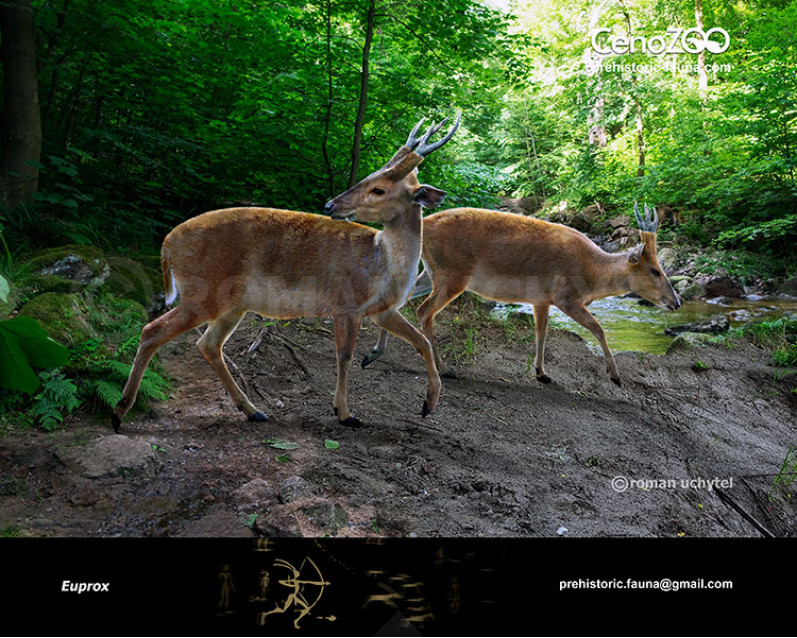
-797x638.jpg)
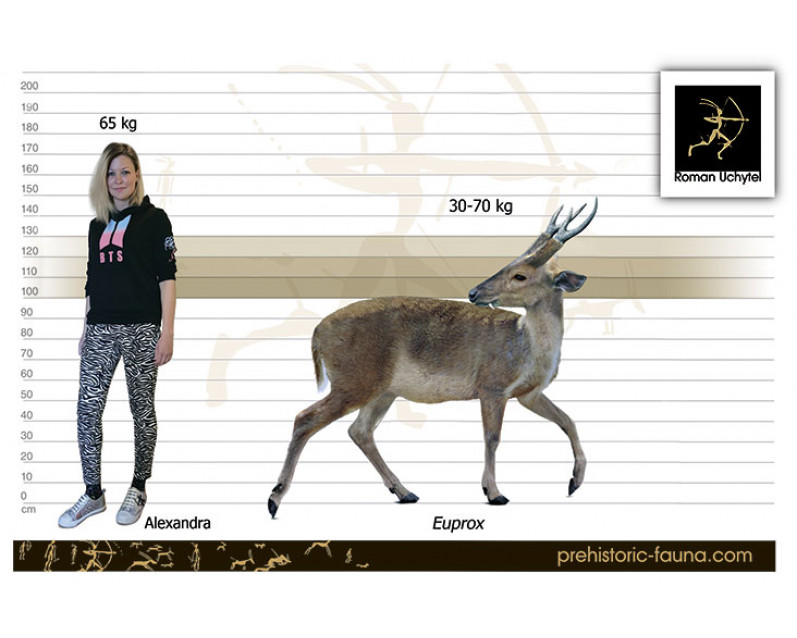

-70x56.jpg)

